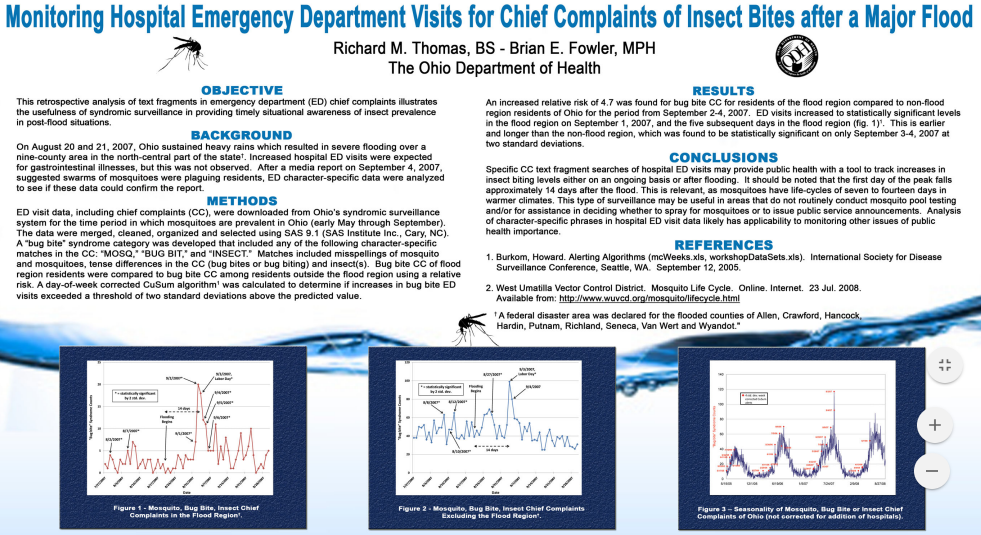After Widespread Flooding, EpiCenter Monitors Disease Vector Populations
Insects and arachnids are vectors for a variety of diseases of public health importance. In areas where these diseases are endemic, some health departments routinely monitor these populations and apply control measures as necessary. In other areas, monitoring is infeasible or unnecessary under normal conditions, but could be of value under extraordinary circumstances such as widespread flooding.
The Ohio Department of Health demonstrated that monitoring of emergency department complaints related to mosquito and insect bites was useful for tracking increases in mosquito populations after an area experienced a major flood. Thus, EpiCenter could be used to monitor disease vector populations during extraordinary circumstances in areas where the capacity for traditional trapping methods is not maintained.

